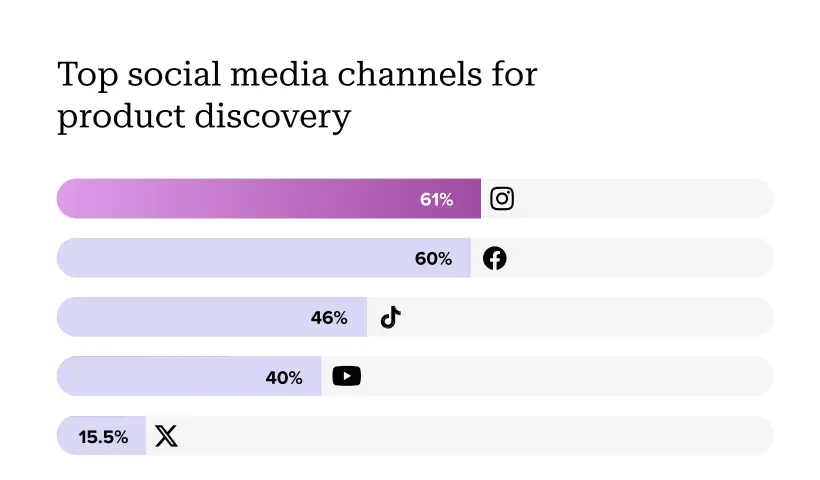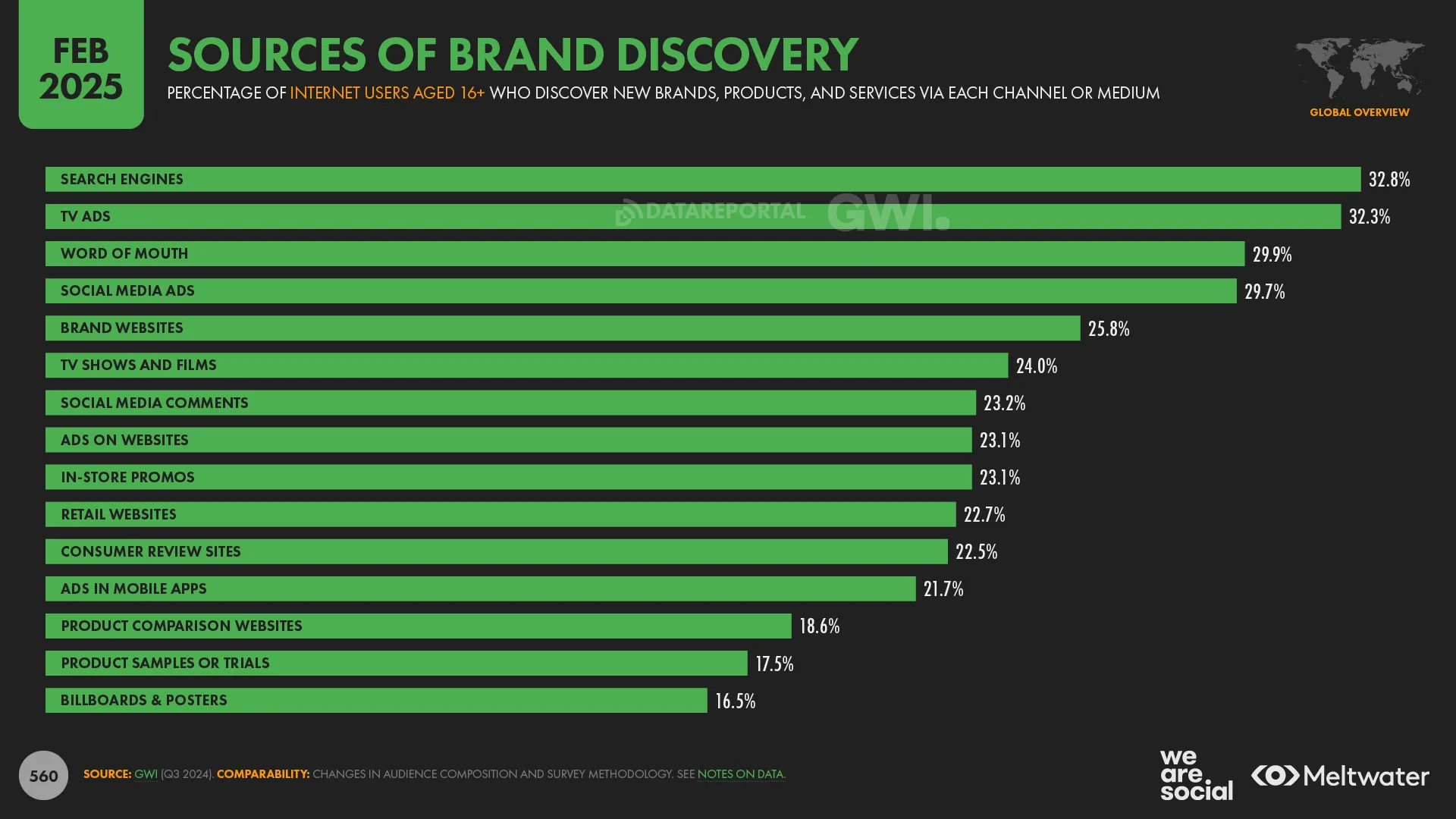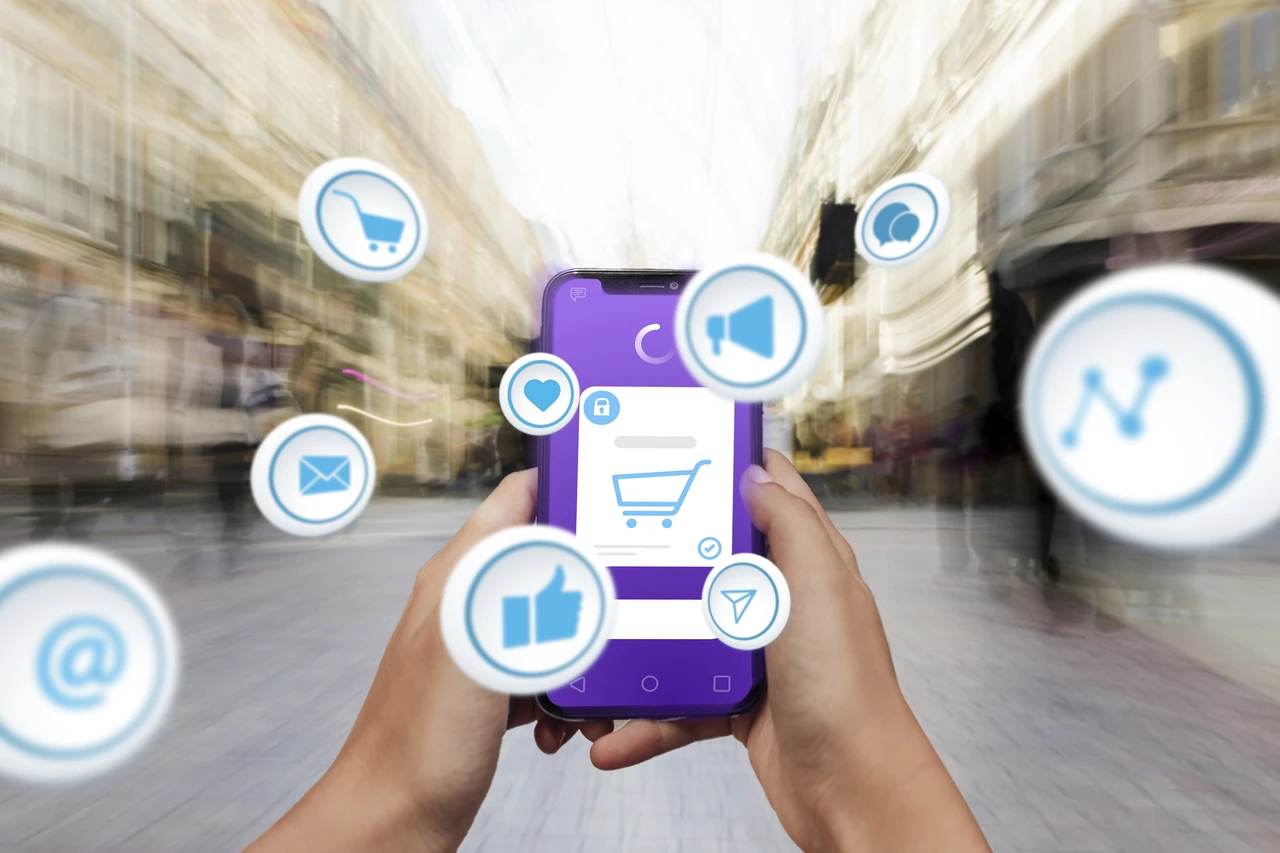Listen to article
In an ever-evolving digital landscape, understanding how consumers discover brands is more critical than ever. As we approach 2025, traditional marketing tactics are being reshaped by emerging technologies and shifting consumer behaviors. Are you ready to adapt?
The way consumers engage with brands has transformed drastically, particularly with the rise of AI, augmented reality, and the increasing influence of social media on purchase decisions. These shifts present both challenges and opportunities for marketers striving to capture audience attention and build lasting brand loyalty.
This article dives into key trends shaping brand discovery in 2025, providing actionable insights into how you can optimize your strategies to stay ahead of the curve. From leveraging AI-powered customer service to embracing purpose-driven marketing, we’ll explore the strategies you can implement today to thrive in the future.
AI in Customer Service: Meeting Modern Expectations
In a world where instant solutions and seamless experiences define customer satisfaction, AI is transforming how brands handle service and support. By automating routine interactions and delivering speedier resolutions, AI doesn’t just enhance efficiency—it directly influences how customers perceive a brand’s reliability. Consumers are no longer skeptical of AI; instead, they’re increasingly embracing it as a driver of better service outcomes and personalization.
- Around 73% of consumers anticipate improvements in customer service quality through AI and foresee more frequent AI interactions in their daily lives. Source
Key Takeaway
As AI becomes an integral part of the customer-service landscape, the message is clear: automation and personalization aren’t just “nice-to-haves.” They’re table stakes for building loyalty and trust in a competitive market. Leveraging AI doesn’t just streamline operations—it prepares brands to meet modern customer expectations while allocating human teams to more complex, high-value interactions.
Pro Tip:
Transparency is key when deploying AI in customer service. Make it clear when customers are engaging with AI versus a live representative, ensuring they feel informed and confident throughout the process. This small step can significantly boost trust and credibility in your brand.
For brands looking to integrate AI alongside broader marketing efforts, it’s important to have a comprehensive strategy that aligns with modern consumer behavior. Many companies find success by partnering with full-service marketing providers who can guide them in seamlessly incorporating AI technologies while maintaining consistency across all customer touchpoints.
Creating Seamless Customer Journeys Through Omnichannel Integration
In an era dominated by rapid shifts in consumer behavior, delivering a unified and frictionless customer experience across channels is what sets brands apart. Modern consumers don’t just expect convenience—they demand consistency, whether they’re engaging with your brand on a mobile app, browsing in-store, or scrolling through social media. Omnichannel strategies aren’t merely an operational upgrade; they’re the foundation of meaningful connections and long-term customer loyalty.
- A comprehensive omnichannel marketing strategy integrates customer experiences across all channels and touchpoints. Source
- For businesses striving to maintain a competitive edge, delivering an integrated online-offline customer experience is now essential. Source
- A significant 75% of consumers are more likely to increase their spending with businesses that prioritize delivering a high-quality customer experience. Source
- Despite the recognized importance, only 27% of senior marketers believe their omnichannel journeys are well-aligned, indicating substantial opportunities for improvement and innovation in this area. Source
Key Takeaway
The numbers make one thing clear—consumers reward brands that provide cohesive, high-quality experiences across every touchpoint. Yet the gap between customer expectations and marketers’ perceived alignment highlights the untapped potential for differentiation. By focusing on tighter integration between digital and physical channels, companies can not only increase engagement but also cement brand loyalty in a competitive marketplace.
Pro Tip:
Go beyond surface-level alignment by leveraging customer data to personalize experiences at every stage of the journey. Tools like CRM platforms, marketing automation, and cross-channel analytics can help you pinpoint friction points and optimize for a truly seamless omnichannel experience.
Social Media and Community Platforms: The New Frontier for Brand Discovery

Source: Sprout Social
As consumer behavior evolves, social media and community platforms are rapidly transforming into informal search engines, particularly for younger audiences. These platforms not only provide a space for authentic peer-to-peer interactions but also deliver the immediacy and visual appeal that traditional search engines often lack. For brands, this trend presents a unique opportunity to connect with consumers in a more conversational and immersive way. The challenge? Adapting strategies to align with how each platform is fundamentally reshaping search behavior.
- Approximately 46% of Gen Z individuals turn to social media for quick, visual, and community-driven answers, deviating from traditional search engines. Source
- More than two in five Americans now use TikTok as a search engine, showcasing its rising significance for discovery. Source
- In 2024, 64% of Gen Z users reported relying on TikTok to explore and gather information. Source
- Last year alone, “+Reddit” was appended to 32 billion Google searches, emphasizing Reddit’s role as a trusted forum for consumer opinions prior to decision-making. Source
- Reddit experienced a 50% year-over-year growth in revenue and users in Q2 2024, solidifying its influence as a discovery and engagement platform. Source
- A staggering 64% of Gen Z consumers prefer discovering products through social media over any other channel, underscoring how central these platforms are to the buyer journey. Source
Key Takeaway
According to statistics on social media use in business, the rise of social media and forums like TikTok and Reddit as discovery engines marks a significant paradigm shift that marketers cannot afford to overlook. Social platforms are not just a means to entertain—they are where trust is built and purchase decisions begin. To tap into this growing trend, brands need to adopt a platform-native approach, creating content that feels organic to each community while encouraging meaningful interactions.
Pro Tip:
Go beyond simply showing up—become part of the conversation. Engage authentically by sharing advice, answering questions, or offering product recommendations in a way that feels natural to the platform’s culture. Don’t forget to optimize your content by incorporating platform-specific keywords, hashtags, and trending formats to maximize discoverability.
Decoding the Impact of AI-Driven Search on Brand Visibility
The way consumers navigate search results is undergoing a seismic shift, thanks to the rise of AI-powered features like Google’s AI Overviews. These advanced tools aim to deliver instant, AI-generated responses directly within search engines, reducing the need for users to click through to external websites. For brands, this evolution presents a double-edged sword: while it amplifies convenience for users, it simultaneously diminishes the opportunity for organic visibility—especially for brands relying on informational content. To remain competitive, marketers need to rethink their strategies and prioritize creating content that genuinely stands out in a crowded digital landscape.
- AI Overviews, previously referred to as the Search Generative Experience (SGE), are featured at the top of search results, offering AI-curated answers to user queries. Source
- During the beta phase, AI Overviews were visible in a staggering 84% of all search queries, indicating their potential to dominate the online experience. Source
- However, following the tool’s U.S. launch in May 2024, their visibility dropped significantly to just 7% of search queries, likely due to Google’s efforts to mitigate misinformation. Source
- Brands relying on question-based, top-of-funnel content may see traffic declines, as AI Overviews and updates like Google’s Helpful Content Update provide immediate answers directly on the search engine results page. Source
Key Takeaway
AI-powered search is redefining the rules of engagement, and brands must adapt to remain visible in a competitive digital environment. Relying solely on surface-level content is no longer enough—creating deep-dive, high-value resources that AI tools cannot easily replicate is the key to staying ahead. Additionally, diversifying traffic sources, such as social media, email marketing, and community-building platforms, can help safeguard against fluctuations in search engine algorithms.
Pro Tip:
Shift your content strategy to focus on offering unique value—think exclusive industry insights, actionable takeaways, and original research. By providing content that goes beyond generic answers, you not only appeal to human readers but also enhance your relevance in an AI-driven search ecosystem.
The Strategic Advantage of First-Party Data in a Cookieless Era
With the phasing out of third-party cookies, marketers face an opportunity—and a challenge—to redefine how they connect with audiences. The age of first-party data is here, requiring brands to think beyond mere compliance and instead use data as a tool to foster trust and loyalty. Ethical data practices are no longer just legal obligations; they’re also a key differentiator in building consumer confidence. In this environment, staying ahead means understanding not only how to collect and leverage first-party data effectively but also how to align with consumer expectations of transparency and respect for privacy.
- The decline of third-party cookies has increased the importance of first-party data, content marketing trends, and email marketing. Source
- Responsible data use and a focus on social responsibility are crucial for maintaining brand credibility and customer loyalty. Source
- Using first-party data helps ensure higher quality leads in an increasingly competitive ad space. Source
- Google’s enhanced conversions feature utilizes first-party data to improve bidding accuracy. Source
- First-party data can be used as an audience signal in Performance Max campaigns to improve bidding effectiveness. Source
- High-quality first-party data leads to better-performing Lookalike Audiences, which can enhance social ad targeting. Source
- Stringent regulations, such as GDPR in Europe, will continue to influence how businesses collect, store, and utilize customer data. Source
Key Takeaway
First-party data isn’t just a replacement for third-party cookies—it’s a transformative opportunity to create deeper, permission-driven relationships with your customers. Brands that prioritize ethical marketing and comply with privacy regulations can unlock not only better campaign performance but also long-term customer loyalty. Transparency is more than a box to check; it’s an invitation to consumers to actively engage with your brand, knowing their data is handled responsibly.
Pro Tip:
To maximize the value of first-party data, align your teams around a robust data management strategy. Leverage platforms that integrate data collection, segment analysis, and campaign execution while ensuring privacy compliance. Don’t forget to clearly communicate the benefits of your data policies to customers—clarity inspires trust, and trust drives growth.
Connecting Through Authenticity: Influencers, UGC, and Video
In a world where audiences are oversaturated with advertisements, authenticity has become the currency of trust. Influencer marketing, user-generated content (UGC), and video are not just supplementary tactics—they are essential tools for building brand credibility. These strategies resonate deeply with younger generations, especially Gen Z, who place higher value on peer recommendations, relatable content, and genuine connections over polished corporate messaging. Brands that embrace these approaches are positioned to cut through the noise and foster loyalty in an authentic, community-driven way.
- 55% of Gen Z consumers report that recommendations from influencers directly shape their purchasing decisions. Source
- User-generated content enhances trust among young audiences by showcasing real consumer opinions and brand experiences. Source
- The creator economy, valued at $250 billion in 2024, is expected to surge to $480 billion by 2027, largely fueled by UGC’s role in marketing. Source
- Campaigns incorporating UGC see a 25% boost in engagement, proving that consumers connect more with peer-driven narratives. Source
- 60% of users are eager to create branded content when offered incentives, indicating the potential for brands to tap into their audience’s creativity. Source
- User-generated videos on YouTube garner 10x the views compared to professionally produced branded content, demonstrating the audience’s preference for authentic storytelling. Source
- In the B2B sector, 65% of buyers rely on YouTube to guide their purchasing decisions, illustrating video’s versatility beyond consumer markets. Source
- B2B buyers prioritize third-party reviews and content 1.4 times more than direct supplier interactions, reinforcing the demand for unbiased, community-driven resources. Source
Key Takeaway
The numbers don’t lie: today’s consumers gravitate toward brands that feel human. Influencer marketing, UGC, and video content are more than just trends—they’re mechanisms for building communities of loyal advocates. Brands that make consumers feel heard by amplifying their voices or collaborating with relatable influencers stand to win long-term loyalty. For B2B leaders, the growing prominence of unbiased third-party content highlights the shift toward transparency and authenticity, even in highly professional markets.
Incorporating these strategies effectively is not just about creating content but also about streamlining your approach. For instance, leveraging outsourcing SEO services can help maximize your digital marketing ROI efforts while leaving you the bandwidth to focus on nurturing authentic consumer relationships. By blending authenticity with strategic expertise, brands can better position themselves for long-term growth and relevance.
Pro Tip:
To effectively leverage UGC, foster a sense of belonging in your community. Create branded hashtags, host challenges, or incentivize collaborations to encourage customer participation. For video content, focus on authenticity over perfection and prioritize storytelling—remember, the connection lies in the message, not the production value.
The Shift to Purpose-Driven Consumer Loyalty

Source: Global Digital Insights
As the marketplace grows increasingly saturated, the modern consumer isn’t just shopping for products—they’re seeking alignment with brands that reflect their values. For Gen Z in particular, this means prioritizing companies that champion sustainability, inclusivity, and social impact. Choosing a brand is no longer purely transactional; it’s about supporting a vision that resonates personally and globally. Purpose isn’t just a differentiator in 2025—it’s a mandate.
- 20% of Gen Z rank a brand’s commitment to diversity and inclusion among their top five considerations when making a purchase, highlighting the demand for authentic inclusivity. Source
- 50% of Gen Z believe brands should actively take a stand on critical social issues like climate change, racial equity, and LGBTQ+ rights, demonstrating their expectation for corporate activism. Source
- Ethical treatment of employees also resonates deeply, with 51% of Gen Z more likely to support companies known for fostering positive workplace cultures. Source
- Broadening the scope, 75% of consumers (not limited to Gen Z) say inclusion and diversity influence their purchasing habits, while 46% of marketers view cultural relevance via diversity, equity, and inclusion as essential for brand success. Source
Key Takeaway
Purpose-driven branding isn’t about virtue signaling—it’s about truly embedding your company’s values into every touchpoint, from product development to social media messaging. Consumers, particularly Gen Z, demand authenticity and action. Aligning with their values leads to more than just sales; it nurtures trust, advocacy, and long-term loyalty.
Pro Tip:
Amplify your purpose with transparency. Share stories about your sustainability efforts, employee initiatives, and community contributions. Regular communication of measurable progress—like carbon footprint reductions or DEI milestones—reinforces credibility and strengthens consumer trust.
The Power of Unified Marketing Efforts
In a saturated market where consumers are bombarded with messages across multiple channels, creating a seamless and consistent brand experience has never been more critical. Integrated marketing strategies bridge the gap between teams and platforms, enabling businesses to deliver cohesive campaigns that not only capture attention but also drive measurable results. When all parts of your marketing efforts work in harmony, the outcome is greater efficiency, stronger brand recall, and impressive ROI.
- Aligning marketing teams and channels can boost campaign efficiency by 31%. Source
- Adopting an integrated approach in campaigns can deliver 50% more return on investment (ROI). Source
Key Takeaway
The numbers speak for themselves—breaking down operational silos and unifying marketing efforts isn’t a luxury, it’s a necessity for sustained success. Integrated marketing prevents disjointed messaging while enabling teams to better leverage data, creativity, and customer insights. This fosters a smoother customer journey and ensures that every campaign dollar is spent more effectively.
Pro Tip:
Audit your existing marketing channels to identify gaps or inconsistencies in messaging. Use marketing automation tools to streamline workflows, set centralized goals, and track progress in real-time. The more aligned your efforts, the more impactful your campaigns will be—no matter the platform.
Conclusion
As technology and consumer behaviors evolve, brand discovery in 2025 is no longer confined to traditional pathways. From AI-driven interactions that streamline customer service to the immersive power of AR in shopping, each innovation offers brands an opportunity to redefine how they connect with their audiences. Social media and community platforms have shifted the search landscape, especially among Gen Z, while purpose-driven marketing continues to cement its role as a critical factor in consumer decision-making. Meanwhile, the rise of first-party data, UGC, and integrated marketing strategies highlights the need for brands to adapt and innovate to stay ahead.
The key takeaway? Effective brand discovery is about meeting consumers where they are, whether it’s through hyper-personalized digital experiences, authentic social interactions, or aligning with their values on sustainability and inclusivity. By embracing these trends and prioritizing ethical, data-driven, and customer-first strategies, businesses can build trust, foster loyalty, and ultimately thrive in an ever-competitive market.
Ready to boost your traffic and grow your website? Your customers are looking for you, and our SEO services can help you be found across search engines. Let’s make 2025 the year your brand truly stands out!
About Brand Discovery in 2025: How Consumers Find Brands (And What Marketers Still Miss)
This guide was written by the Scopic Studios team and reviewed by Araksya Hakobjanyan, SEO Lead at Scopic Studios.
Scopic Studios delivers exceptional and engaging content rooted in our expertise across marketing and creative services. Our team of talented writers and digital experts excel in transforming intricate concepts into captivating narratives tailored for diverse industries. We’re passionate about crafting content that not only resonates but also drives value across all digital platforms.
Note: This blog’s feature image is sourced from Freepik.































































































































































































































